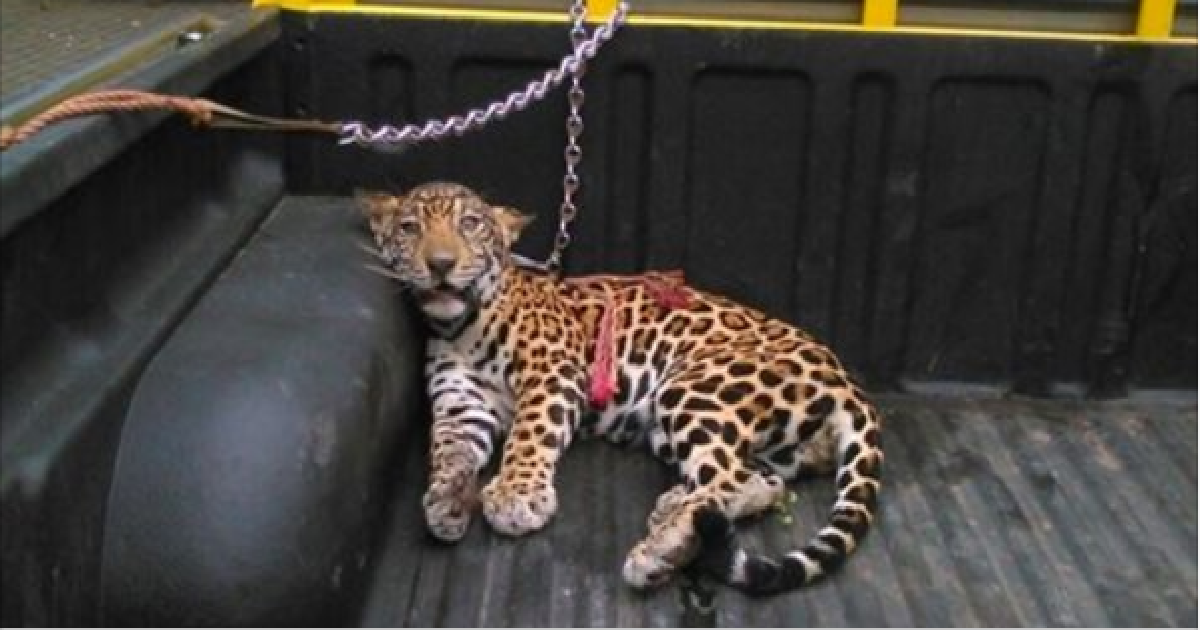Have you ever wondered about the mysterious world of black wolves? Are they merely a myth, or do they truly roam the wilds, their sleek forms blending seamlessly into the shadows? 29 Facts About Black Wolves ventures into the enigmatic realm of these majestic creatures, delving deep into their fascinating history, biology, and cultural significance. But amidst the legends and lore, what truths lie beneath the surface? Do black wolves possess unique characteristics that set them apart from their gray and white counterparts? Join us as we unravel the mysteries of black wolves, exploring their stealthy ways, their undeniable allure, and the secrets they hold within their dark, penetrating eyes. Prepare to be captivated, intrigued, and perhaps even surprised as we journey into the heart of the wolf’s domain.
Genetic Origins of the Black Wolf
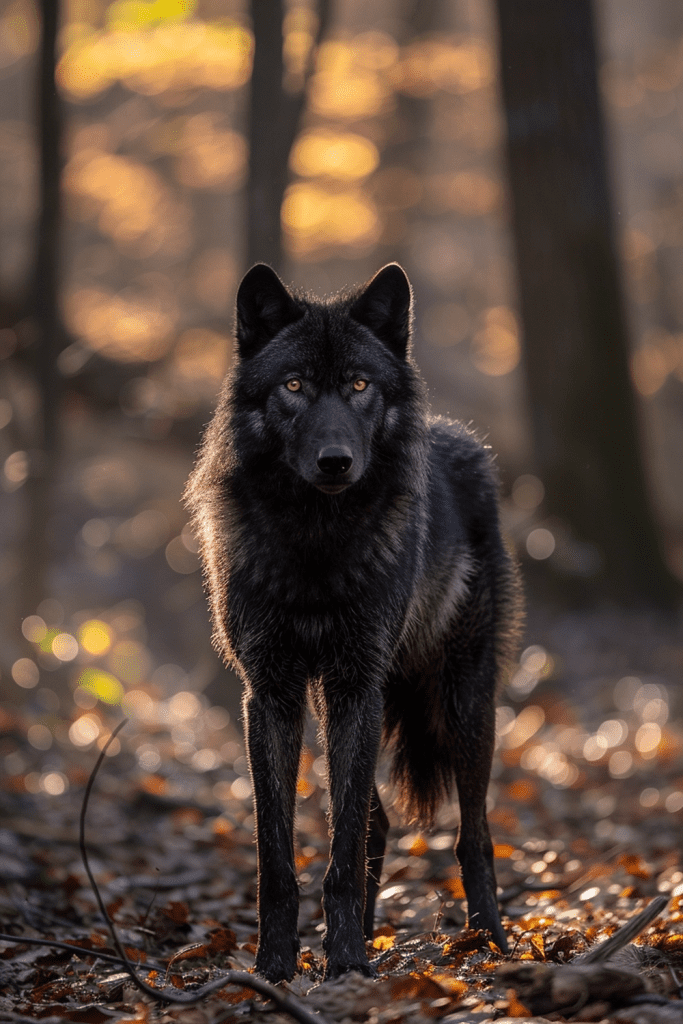
Black wolves owe their distinctive coloration to a genetic mutation that arose from interbreeding between wild gray wolves and domestic dogs, likely several thousand years ago.
The Mutation Behind the Black Wolf’s Color

The black color in wolves is primarily due to a mutation in the K locus (beta-defensin gene), which is responsible for dark pigmentation.
The Rarity of Black Wolves in Nature
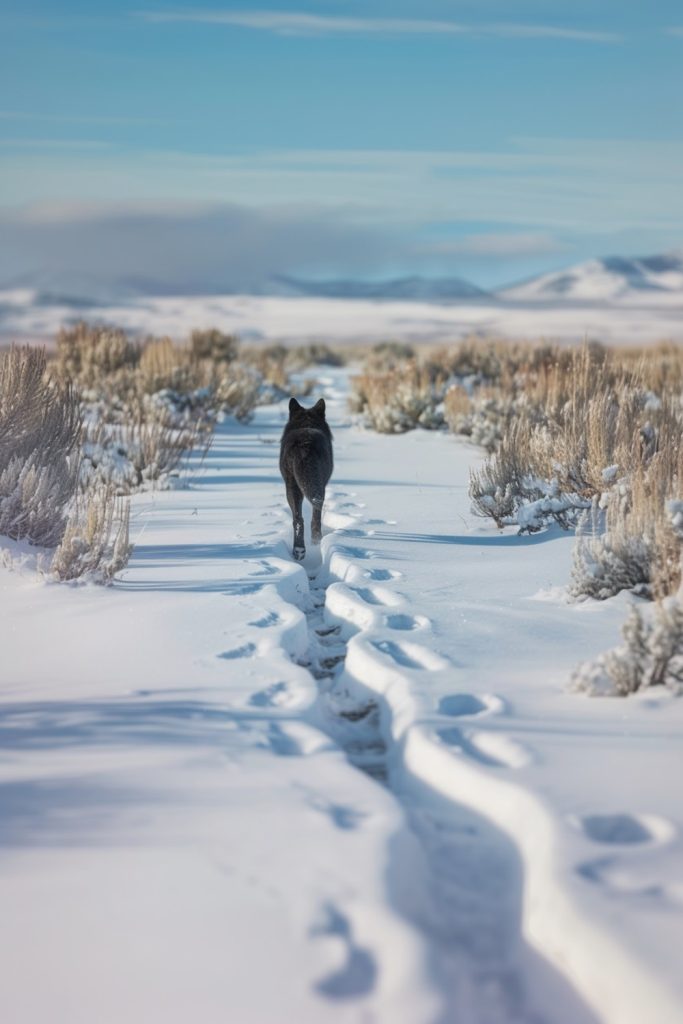
Black wolves are much rarer than their gray or white counterparts and are predominantly found in North America.
Adaptive Benefits of Black Wolf Camouflage
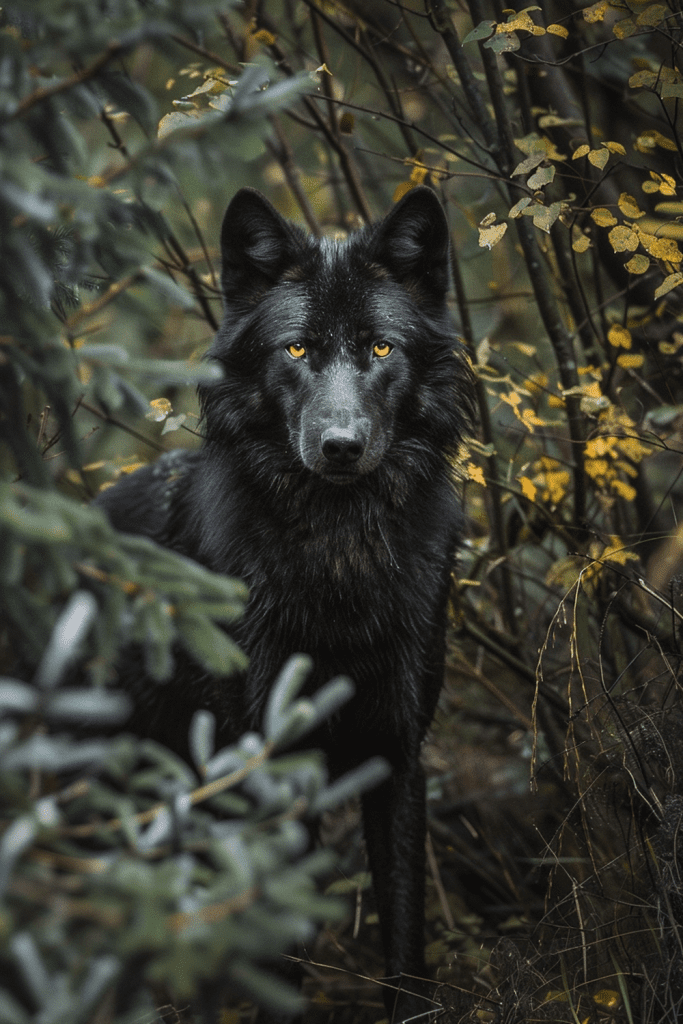
Research suggests that the dark coat color provides an adaptive advantage in forested areas, which may help in camouflage and hunting.
Social Structure of Black Wolf Packs
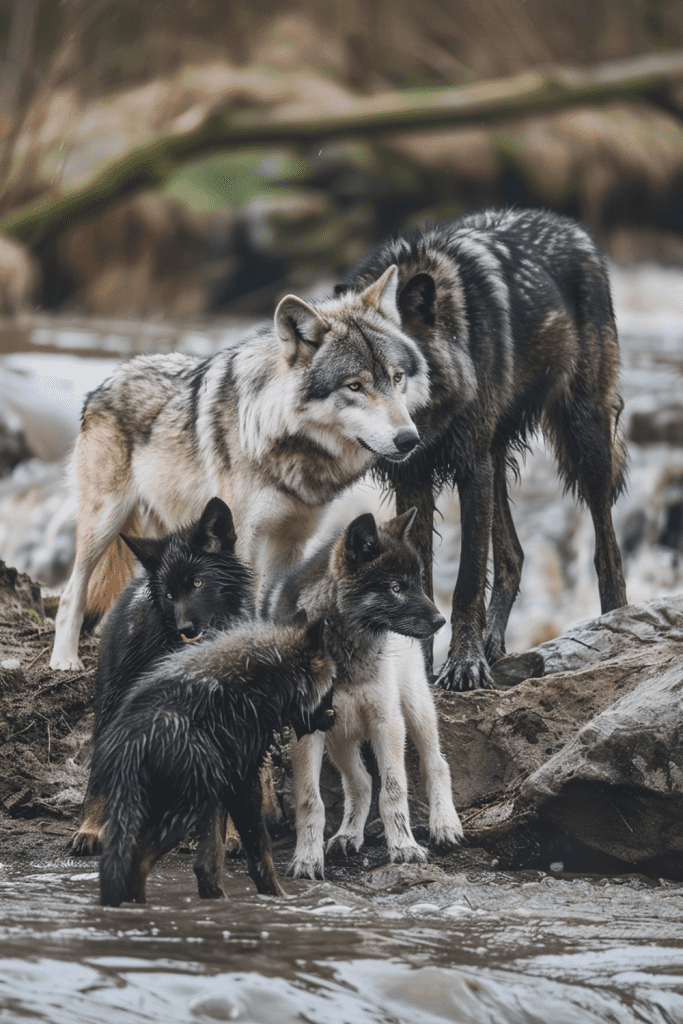
Black wolves are fully integrated members of wolf packs, which are family groups that include both parents and their offspring from several years.
Social Behaviors of Black Wolves
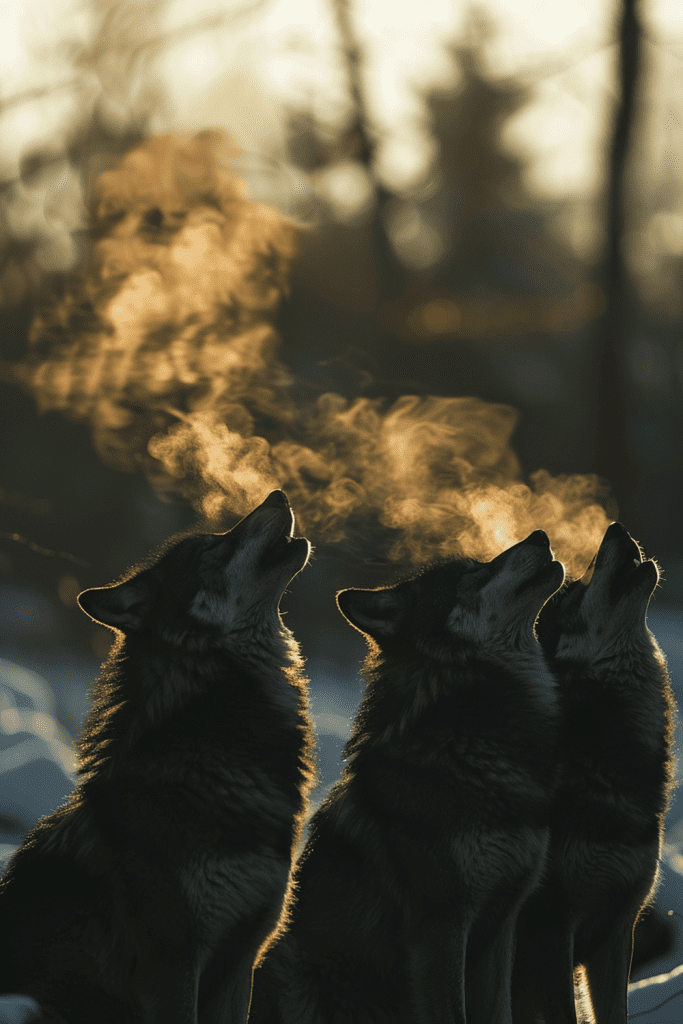
Wolves, including black wolves, are highly social animals and rely heavily on pack structure to survive in the wild.
Territorial Markings of a Black Wolf
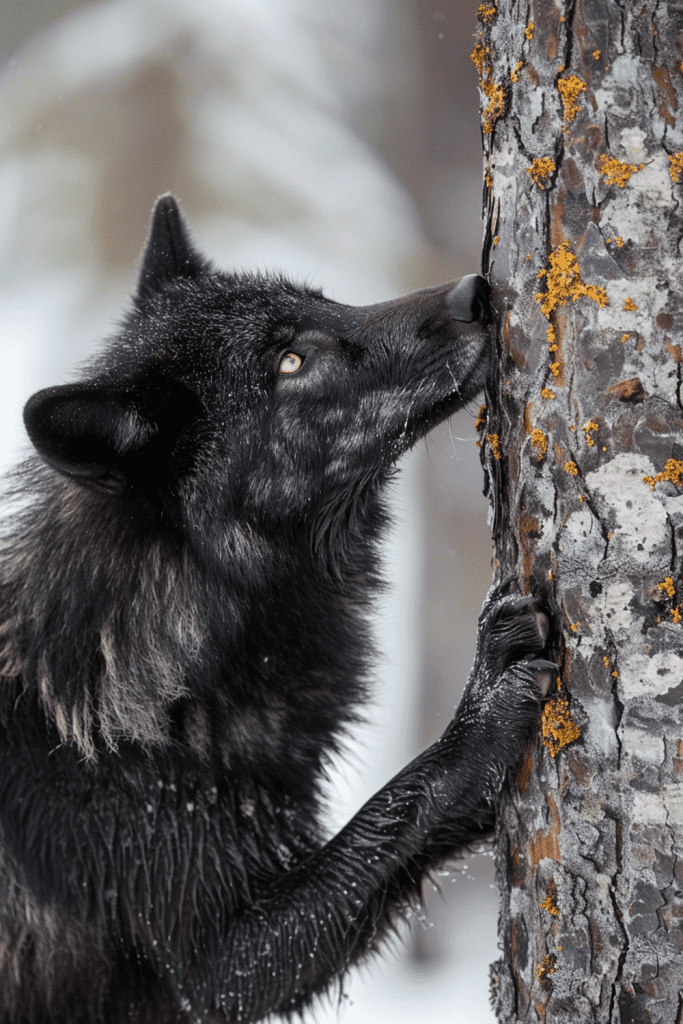
Wolves are territorial and can occupy ranges that vary from 50 to over 1,000 square miles, depending on the local ecosystem.
Communicative Postures in Black Wolves
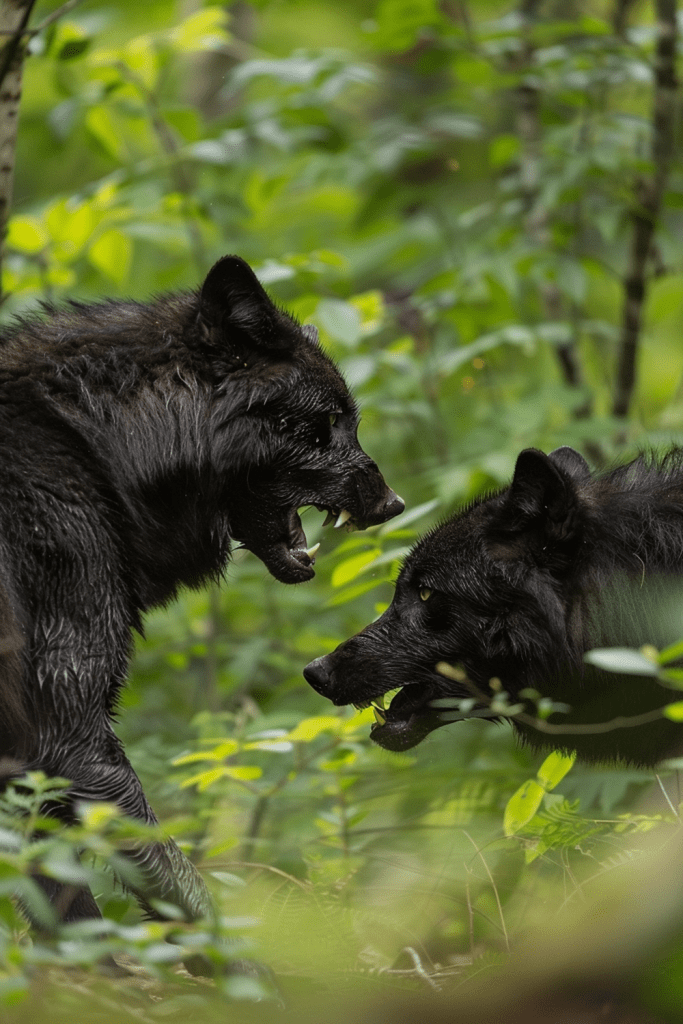
Wolves communicate through a variety of vocalizations, body postures, and scents. Black wolves, like other wolves, use howling to assemble the pack, communicate with other packs, and mark territory.
Maternal Care in Black Wolves
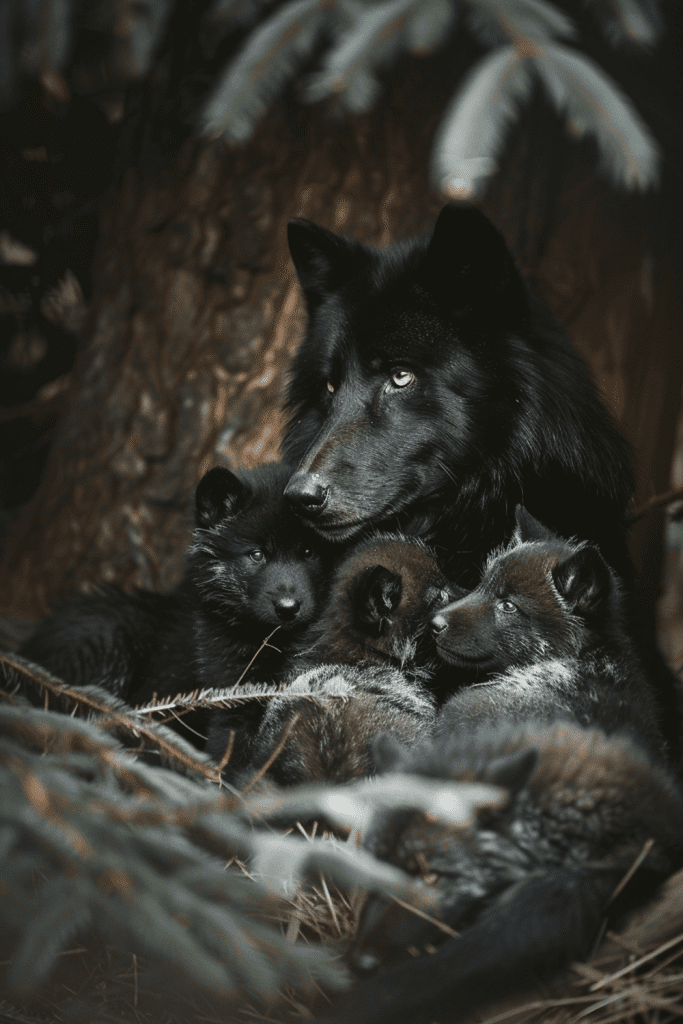
Black wolves mate once a year during the winter months, and the female gives birth to four to six pups after a gestation period of about 63 days.
Parenting Lessons from Black Wolves
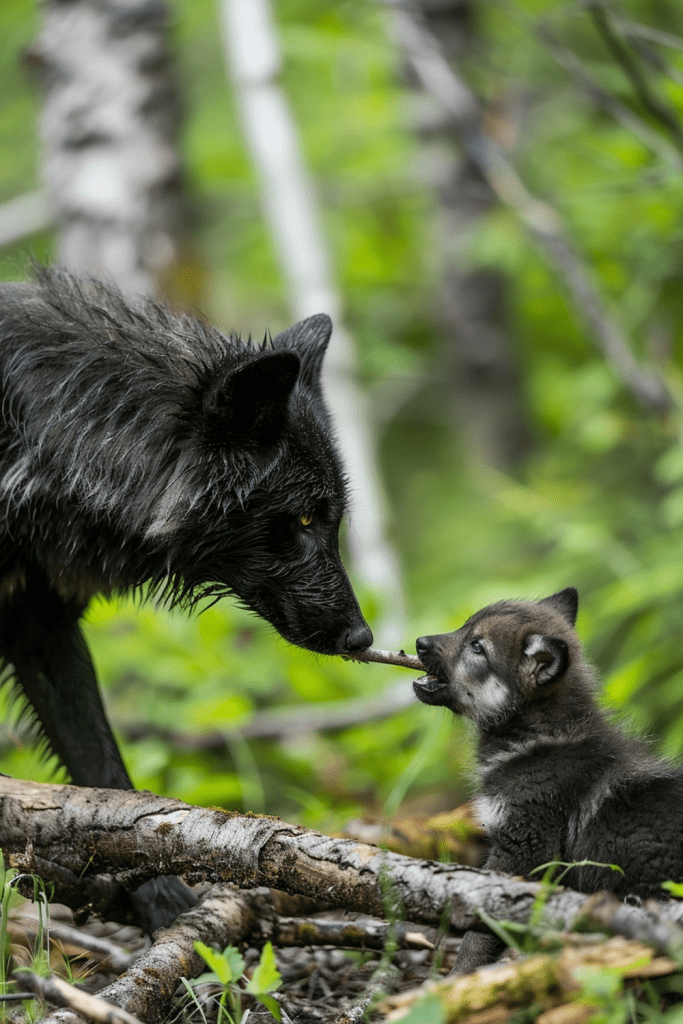
Both parents, along with other pack members, play roles in raising the pups, teaching them to hunt and survive in the wild.
Aging Gracefully: The Life of a Black Wolf
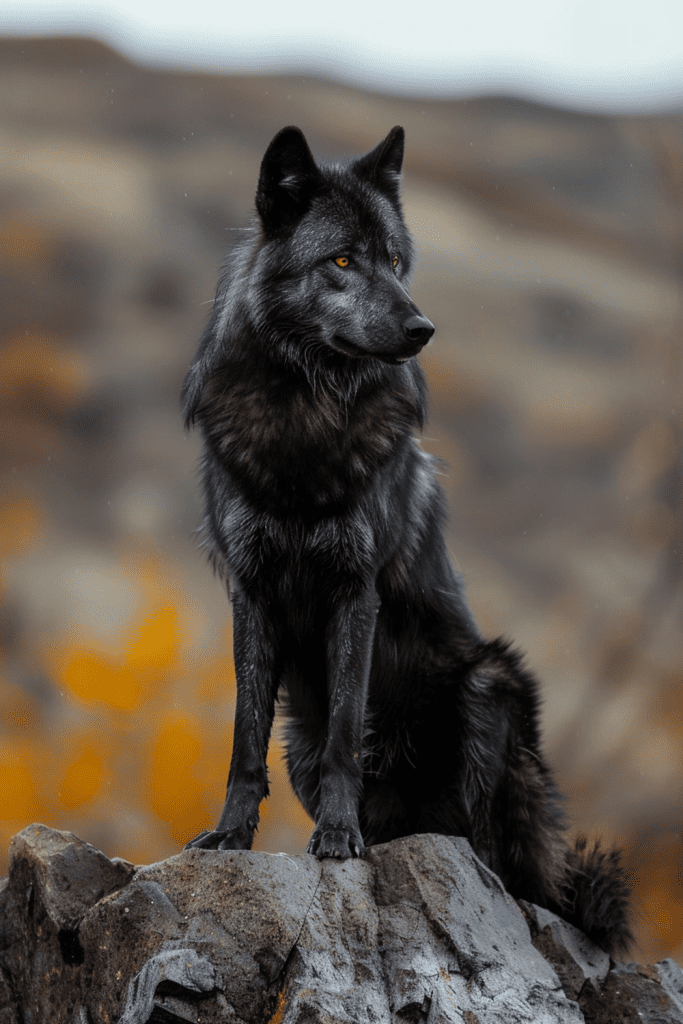
In the wild, black wolves can live 6 to 8 years, but in captivity, they can live up to 13 years or more.
Mythological Significance of Black Wolves
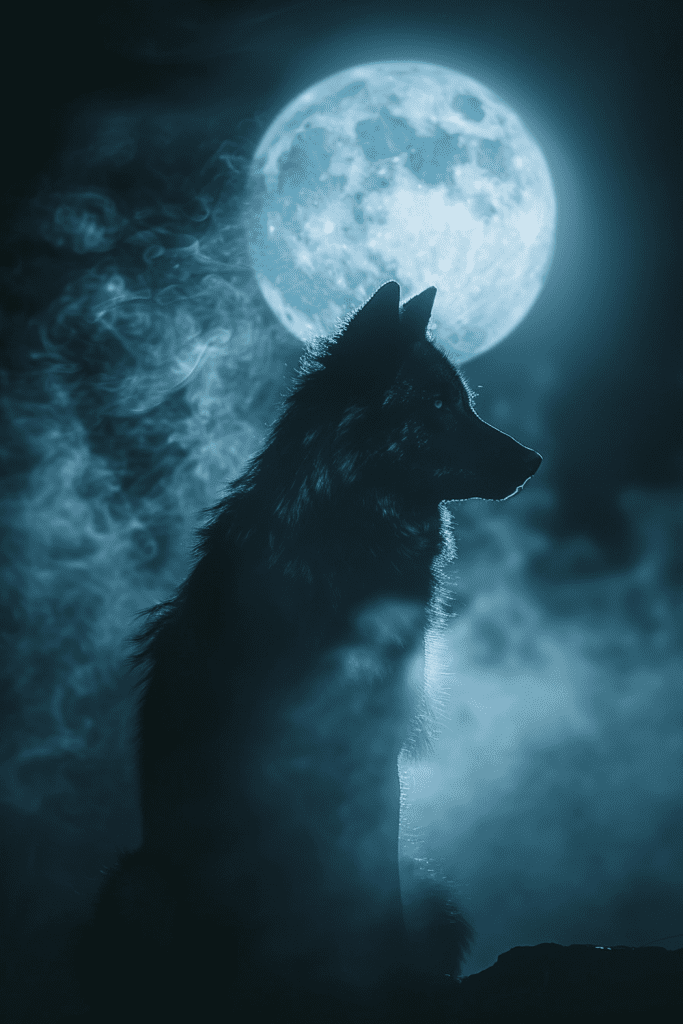
In various cultures, black wolves are often symbolic of mystery, strength, and survival. They appear in numerous myths and folktales.
Conservation Challenges for Black Wolves
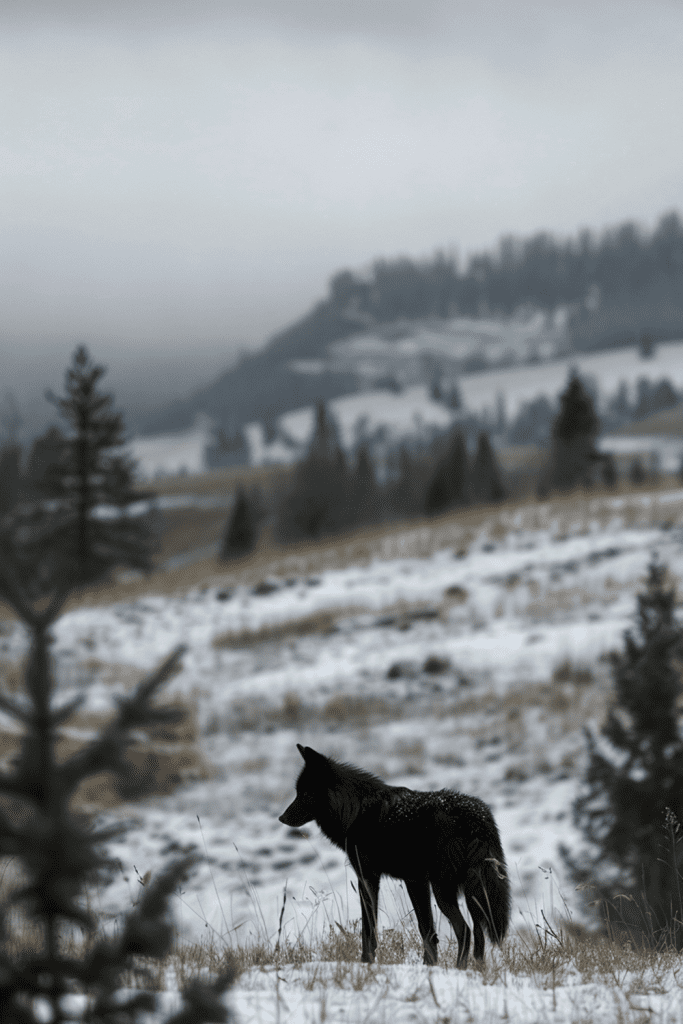
While black wolves themselves are not a separate species, many wolf populations, including those with black individuals, are considered endangered due to habitat loss and human conflict.
Climate Influence on Black Wolf Populations
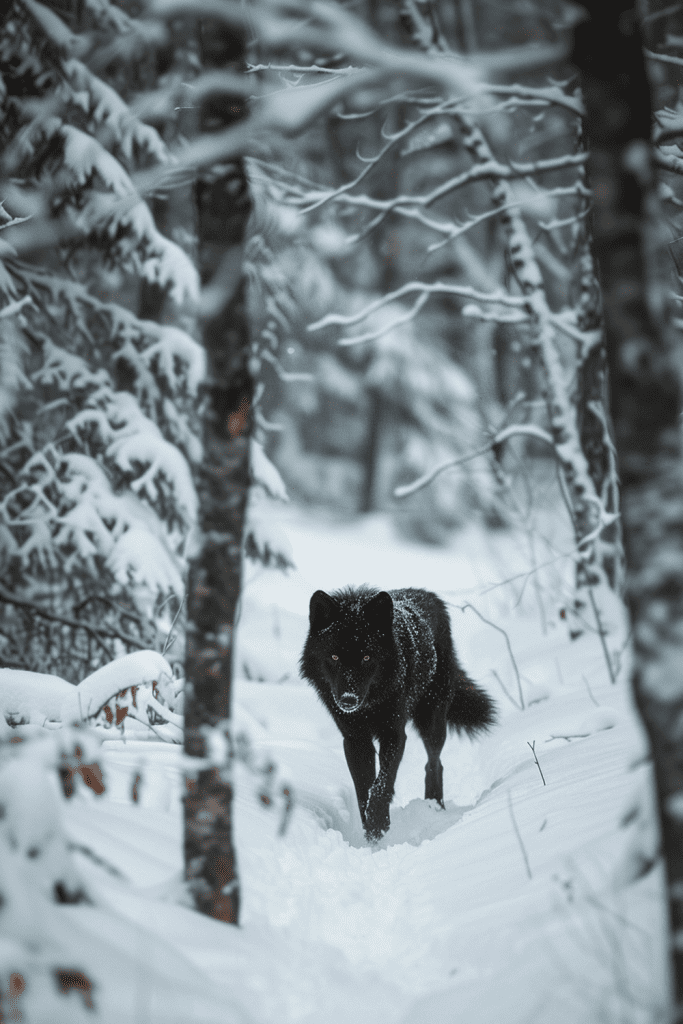
The frequency of black coat coloration in wolves is higher in regions with dense forest cover and colder climates, which supports the idea of climatic influence on phenotype.
Migration Habits of Black Wolves
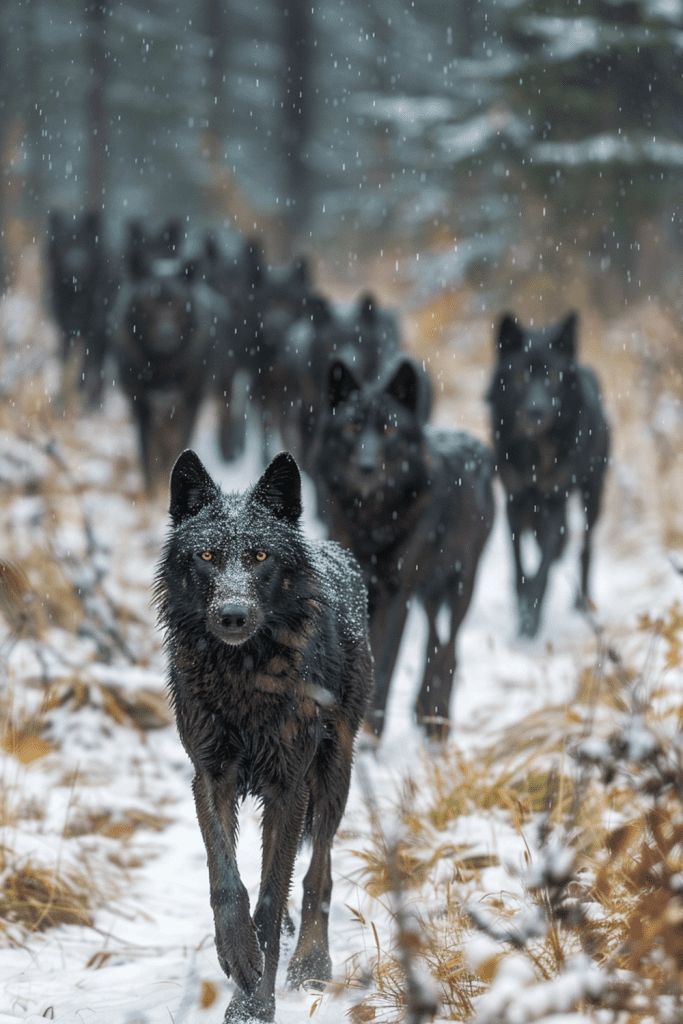
Black wolves, along with their packs, can migrate long distances, especially in response to seasonal changes in prey availability.
Hybrid Vigor: The Black Wolf-Dog Mix
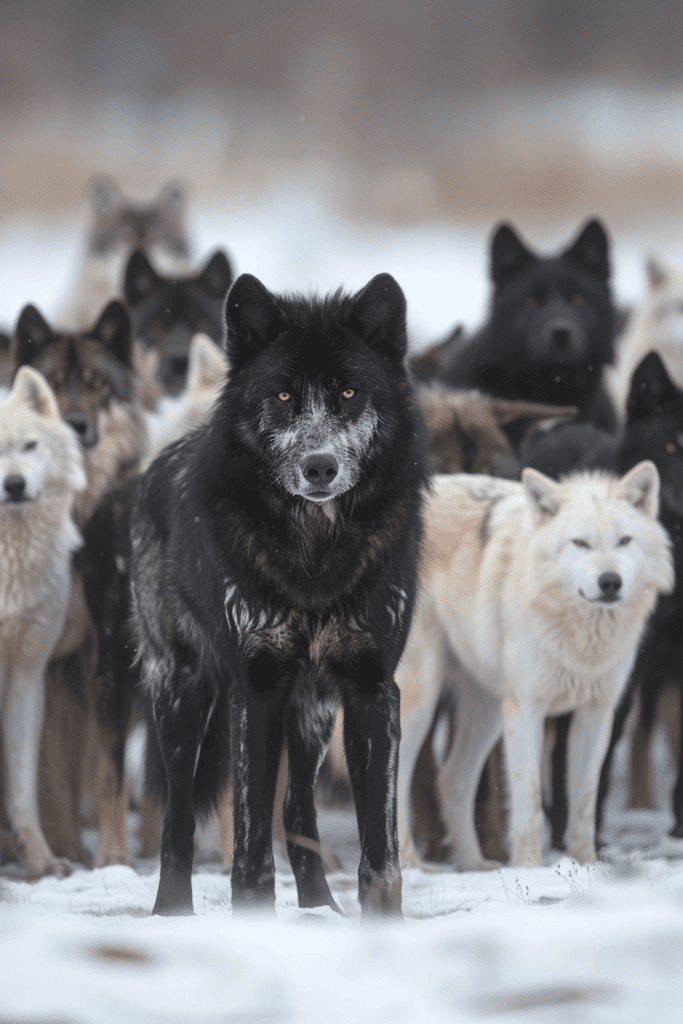
Some black wolves are hybrids, resulting from the recent mixing of domestic dog genes back into the wolf gene pool, particularly in regions where wolf populations are recovering.
Conservation Efforts for Black Wolves
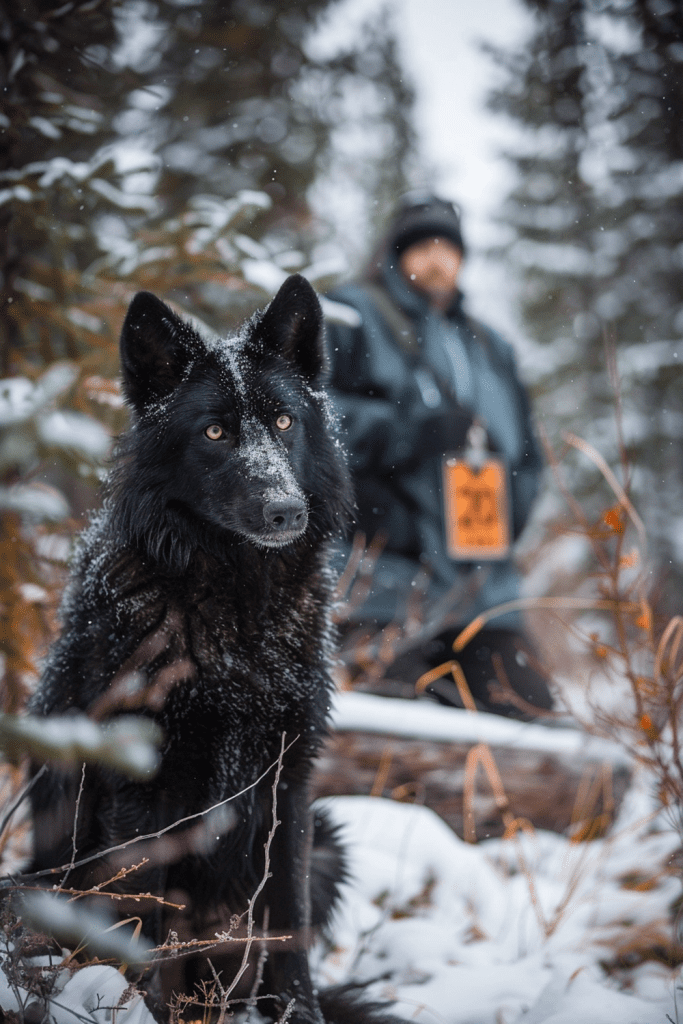
Conservation efforts for black wolves are part of broader wolf conservation programs, focusing on protecting habitats, ensuring viable prey populations, and managing human-wildlife conflicts.
Cultural Impact of Black Wolves on Native Traditions
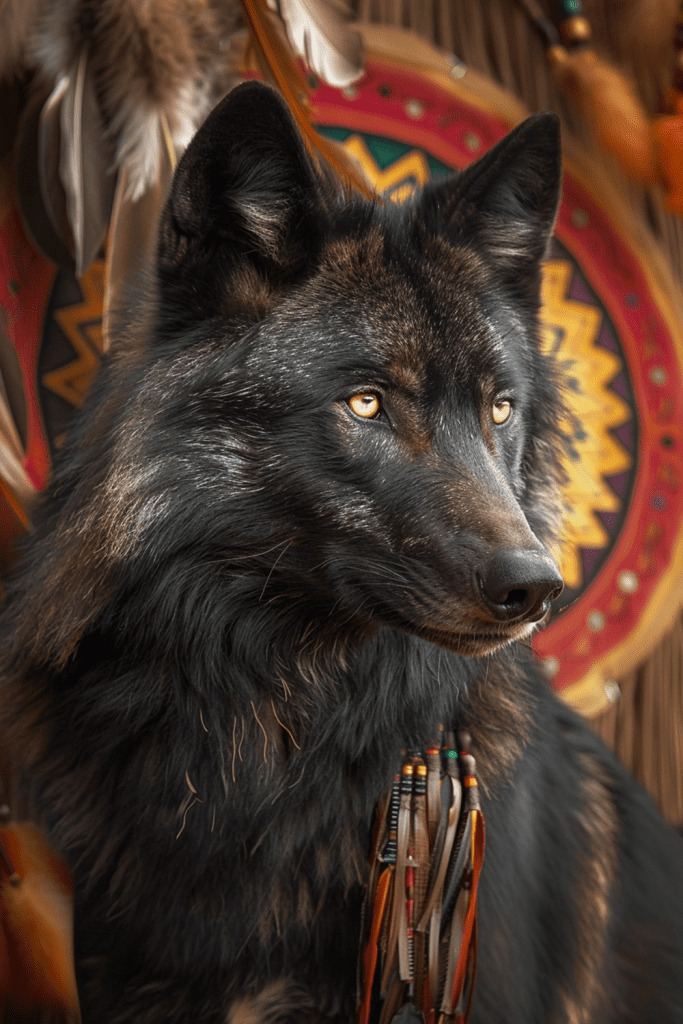
Black wolves hold a significant place in the folklore and narratives of the indigenous peoples of North America, often associated with strength, wisdom, and the spirit world.
Human-Wolf Interaction: Selective Breeding
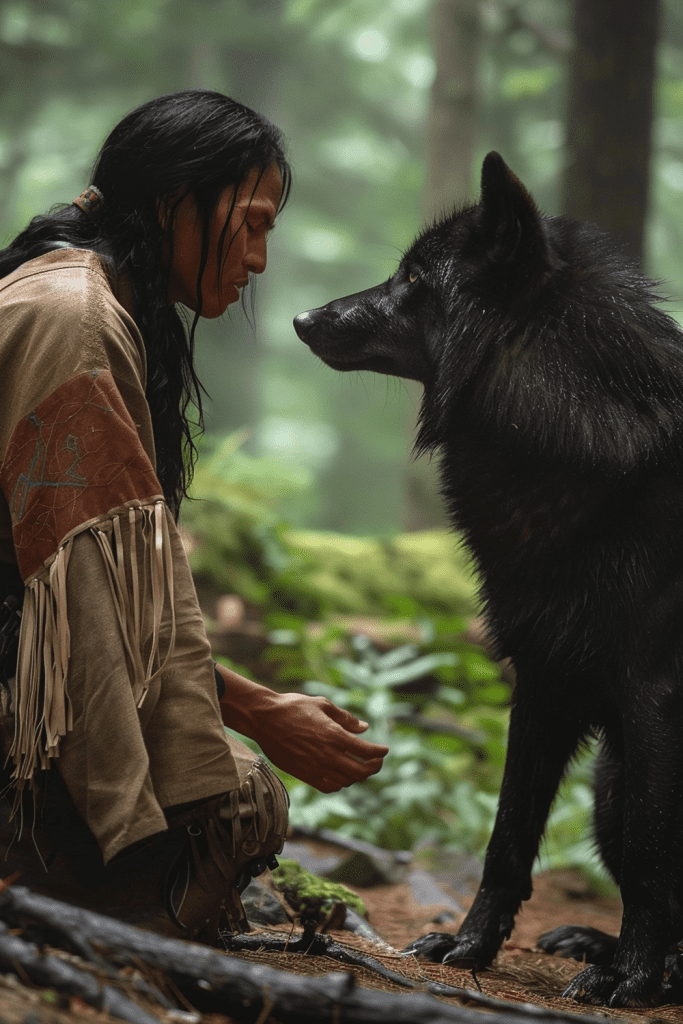
Historical accounts suggest that some Native American tribes may have selectively bred wolves, including black wolves, which could have helped increase their prevalence in certain areas.
Coat Color Variation in Black Wolves
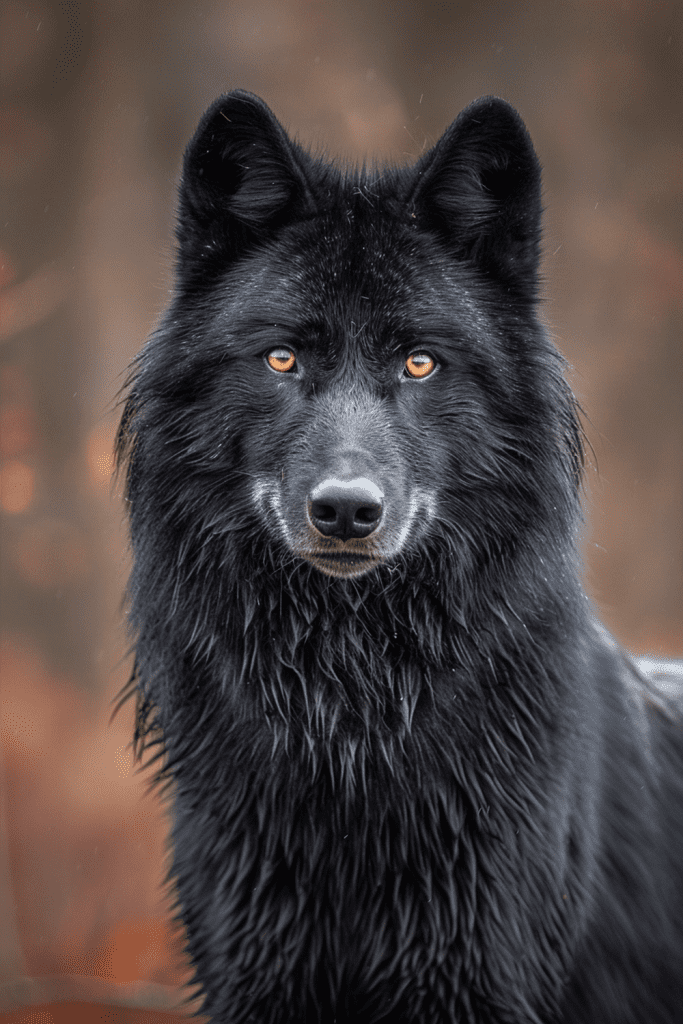
Black wolves can vary significantly in shade, from jet black to a mottled grey-black, depending on the extent of the melanistic gene expression.
A Black Wolf in Yellowstone
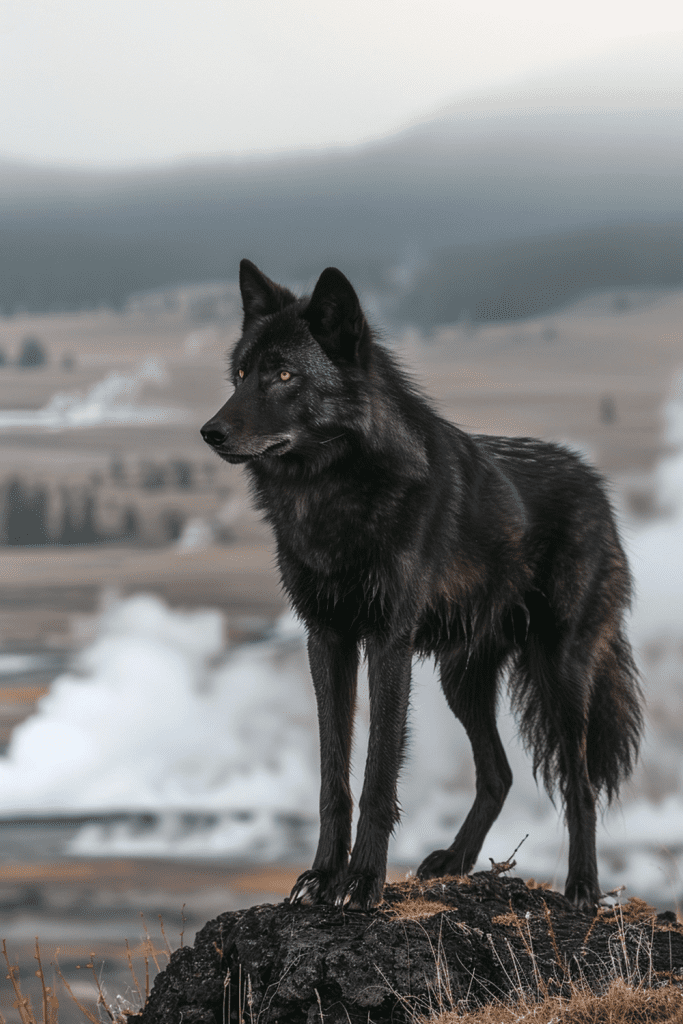
Black wolves were reintroduced to Yellowstone National Park in the mid-1990s, and they have been the subject of extensive study. The park is one of the few places where people can reliably observe black wolves in the wild.
Ecosystem Role of the Black Wolf
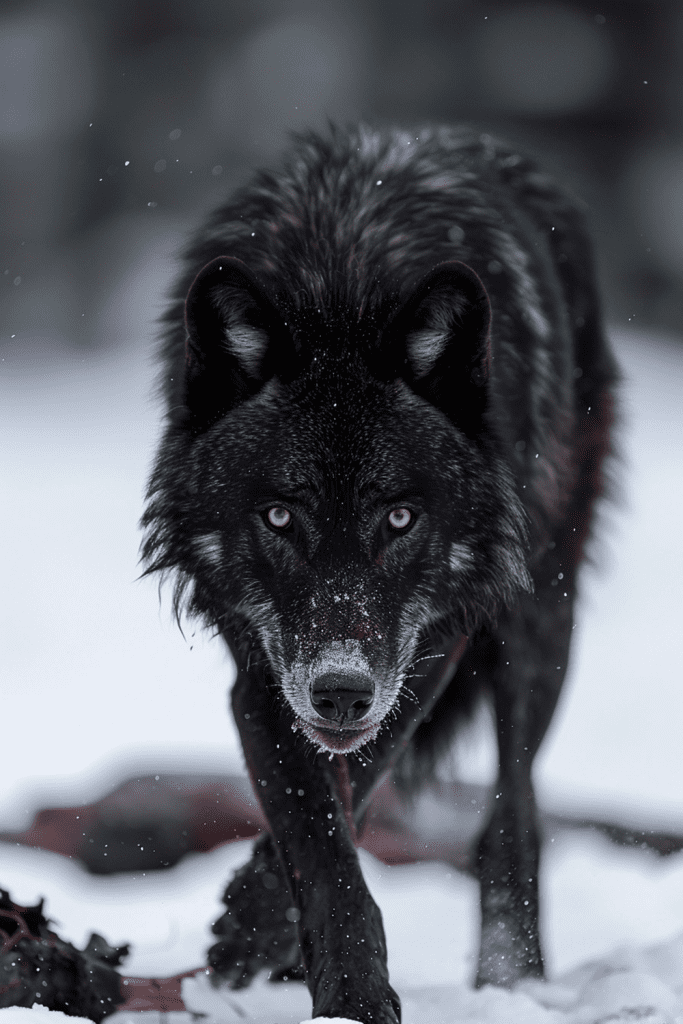
Wolves, including black wolves, play a crucial role in maintaining healthy ecosystems. They help manage prey populations, which can benefit many other plant and animal species.
Unique Behaviors of Black Wolves
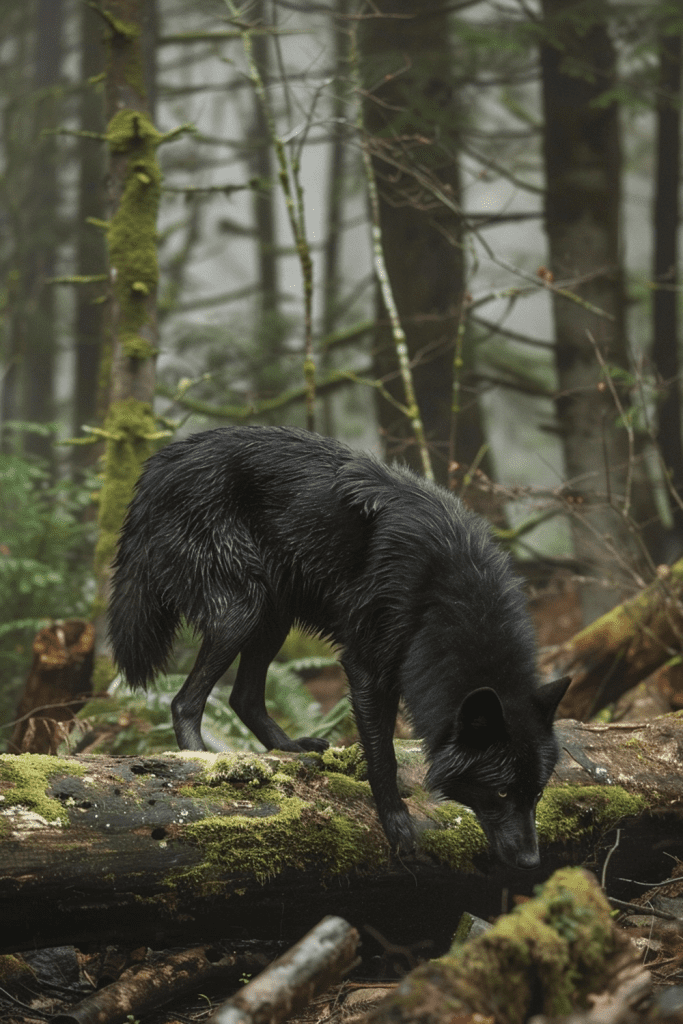
Black wolves, like all wolves, exhibit unique behaviors such as scent-marking, digging dens, and forming strong social bonds that are crucial for their survival in the wild.
Leadership Dynamics in Black Wolf Packs
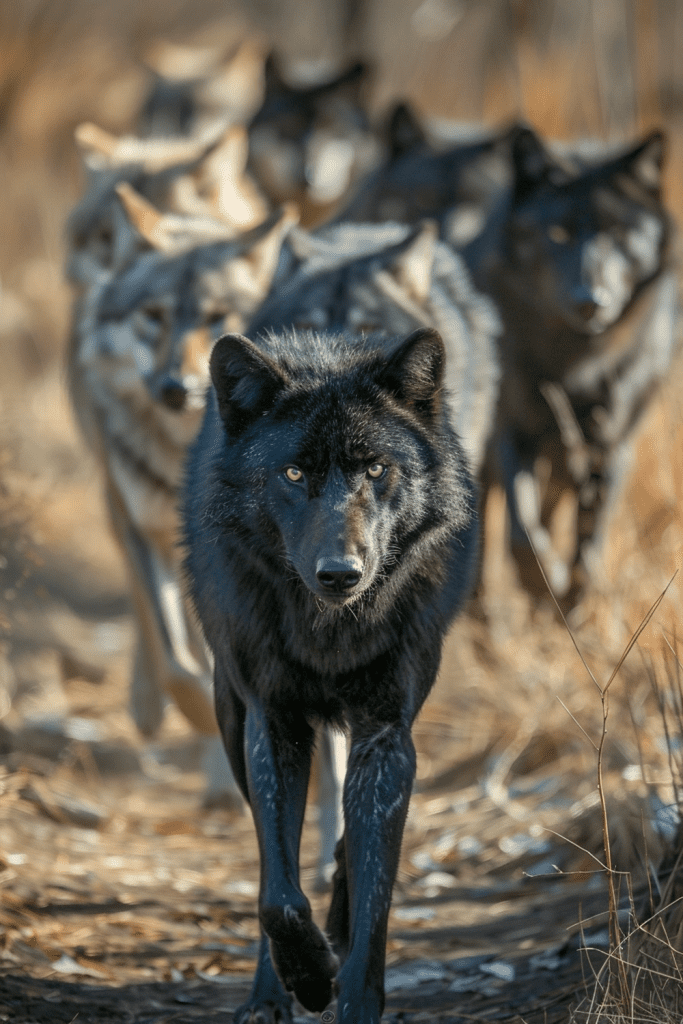
In wolf packs, coat color can influence hierarchy and breeding choices, with some studies suggesting that coat color may correlate with certain roles or behaviors within the pack.
Thermoregulation in Black Wolves
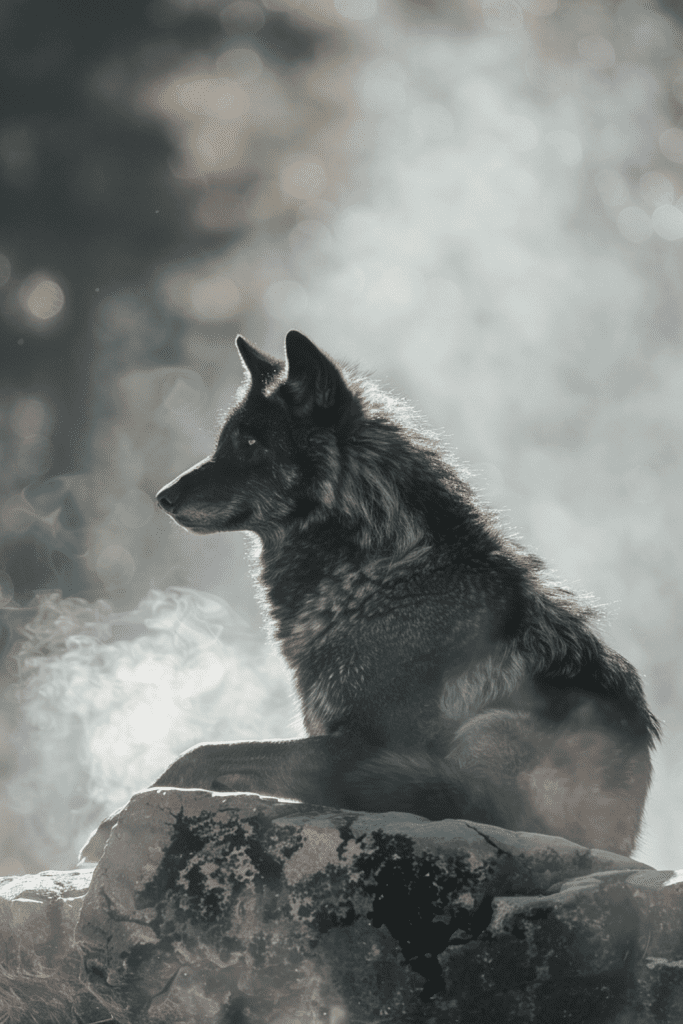
The dark fur of black wolves absorbs more heat, which can be beneficial in colder environments by helping to increase body temperature more efficiently.
Challenges of Stealth for Black Wolves in Snow
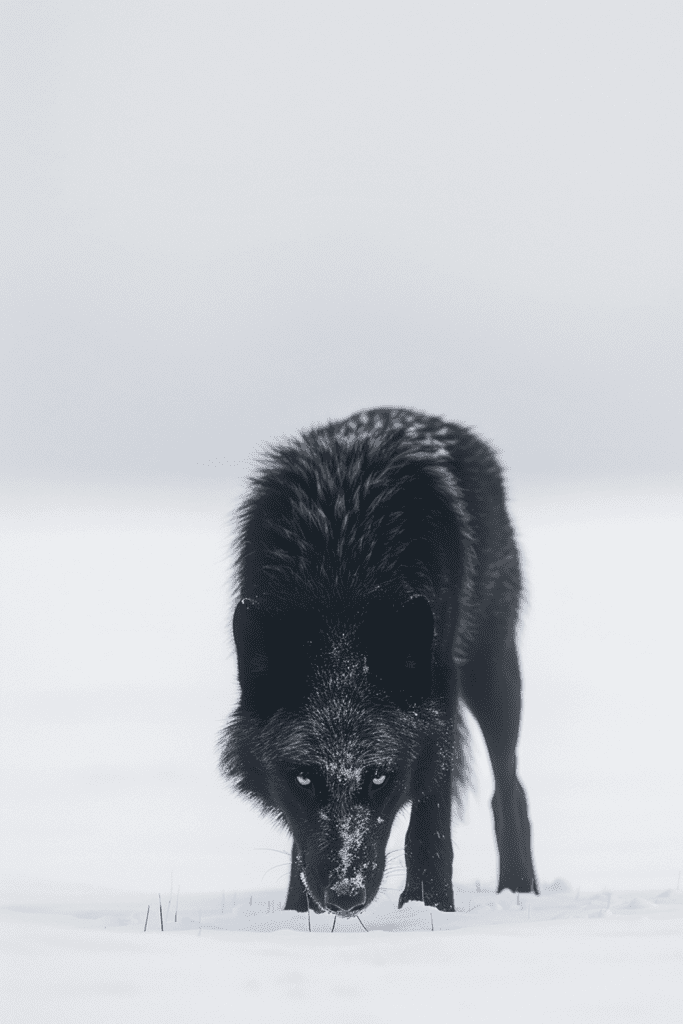
While the dark coloration might aid in camouflage in denser, darker forests, it could potentially make black wolves more visible in snowy landscapes, affecting their hunting strategies.
The Lone Wolf: A Cultural Misconception
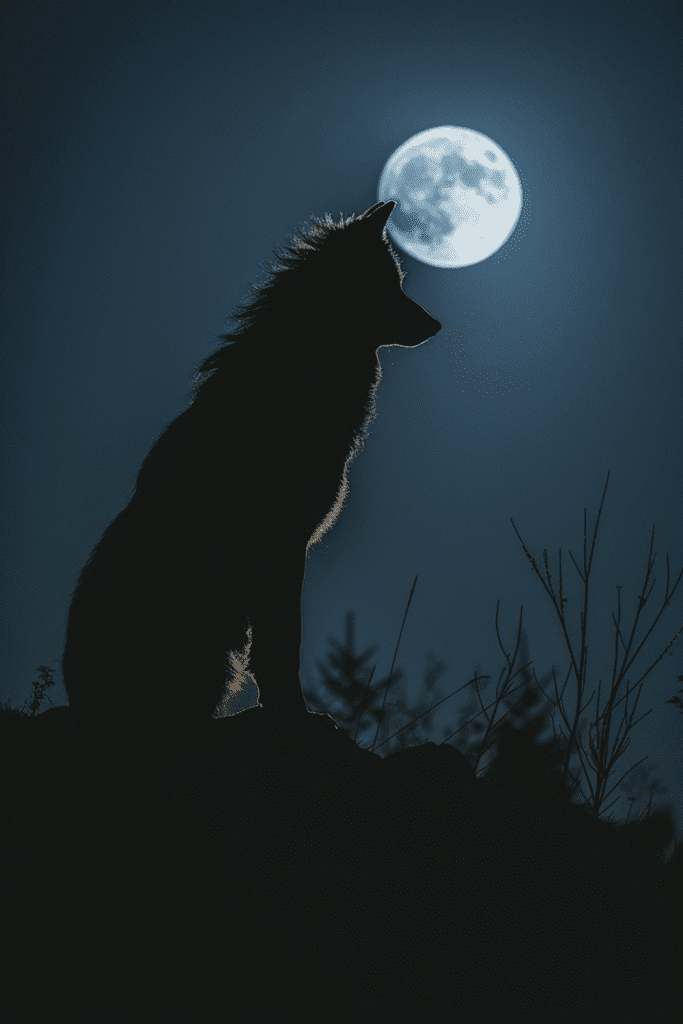
In many cultures, black wolves are often portrayed as lone wolves, which is a misconception. Wolves are typically very social and only rarely become solitary.
Genetic Research on Black Wolves

Genetic research on wolves, including black wolves, has provided insights into canine evolution and the impact of human activities on wild populations.
Black Wolves in Popular Culture
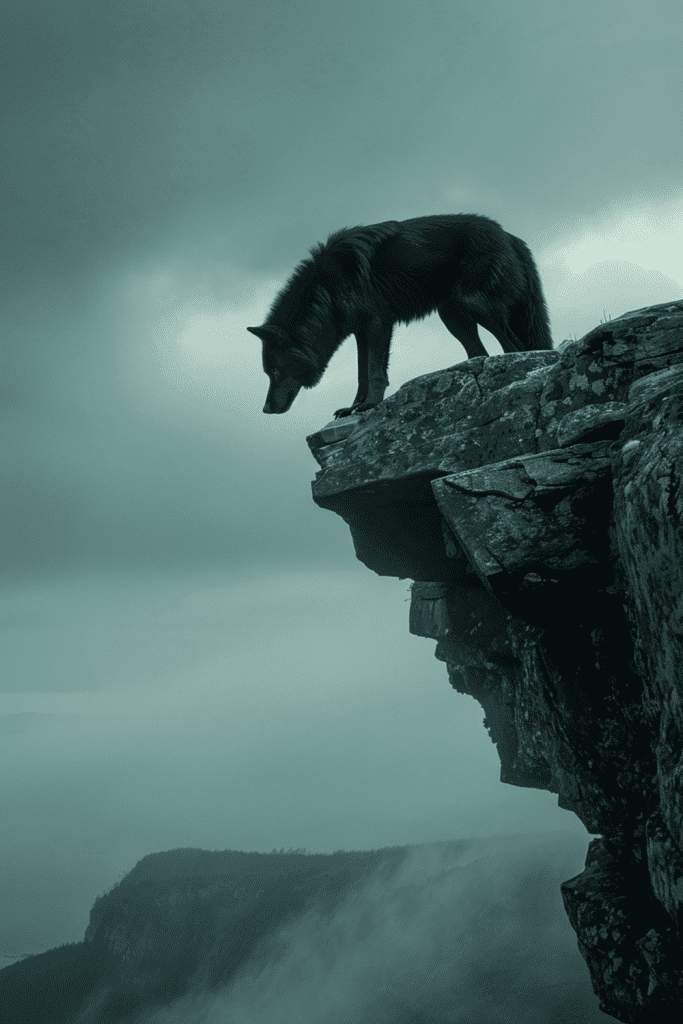
Black wolves frequently appear in literature and film, often symbolizing mystery, freedom, and the wilderness. They are popular in fantasy genres and nature documentaries.
As we reflect on the truths and myths that surround them, one thing remains certain: the allure of black wolves will continue to inspire awe and wonder for generations to come. May this collection of facts serve as a window into their world, fostering a deeper appreciation for these enigmatic animals and the vital role they play in our natural world. Whether prowling the forests of North America or dwelling in the recesses of our imagination, black wolves will forever hold a special place in our hearts as symbols of strength, mystery, and untamed beauty.

